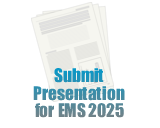 Development of Method 562 for the Analysis of Pesticides in Drinking Water by Solid Phase Extraction and LC/MS/MS
Development of Method 562 for the Analysis of Pesticides in Drinking Water by Solid Phase Extraction and LC/MS/MSDrinking Water
Oral Presentation
Prepared by D. Tettenhorst, J. Story
US EPA Office of Research and Development, 26 W. Martin Luther King Dr., MS689, Cincinnati, OH, 45268, United States
Contact Information: [email protected]; 513-569-7396
ABSTRACT
The U.S. Environmental Protection Agency (EPA) is responsible for protecting the nation’s drinking water from known and emerging contaminants. EPA’s Drinking Water Contaminant Candidate List (CCL) identifies chemicals and microbes that might require future regulation for the protection of drinking water and are not currently subject to any proposed or promulgated national primary drinking water regulations. CCL 5, published in November of 2022, has identified seven pesticides and three degradates as contaminants of interest to the Agency. This presentation describes a rugged solid phase extraction (SPE)-LC/MS/MS method that is being developed for these chemicals that adequately addresses issues specific to analyzing compounds in drinking water, such as preservatives, internal and surrogate standards, holding times for aqueous samples and extracts. Aqueous samples at 500 mL were buffered at pH7 with Trizma® and preserved with 2-chloroacetamide to inhibit microbial growth and dechlorinated with ascorbic acid. Preliminary recoveries of 90.3 – 104% with relative standard deviations of <4.5% have been obtained in deionized water during a 14-day aqueous holding time study using a polymeric highly cross linked divinylbenzene SPE cartridge. Additionally, recovery and precision data for each analyte in drinking water from ground and surface water sources, holding time studies, method detection limits, and lowest concentration minimum reporting levels will be presented. The final published method could be used in the future to gather national occurrence data for method analytes

